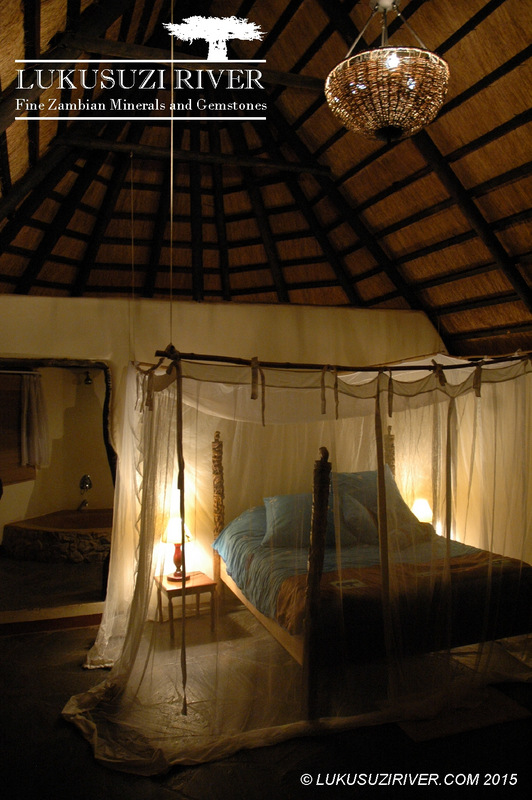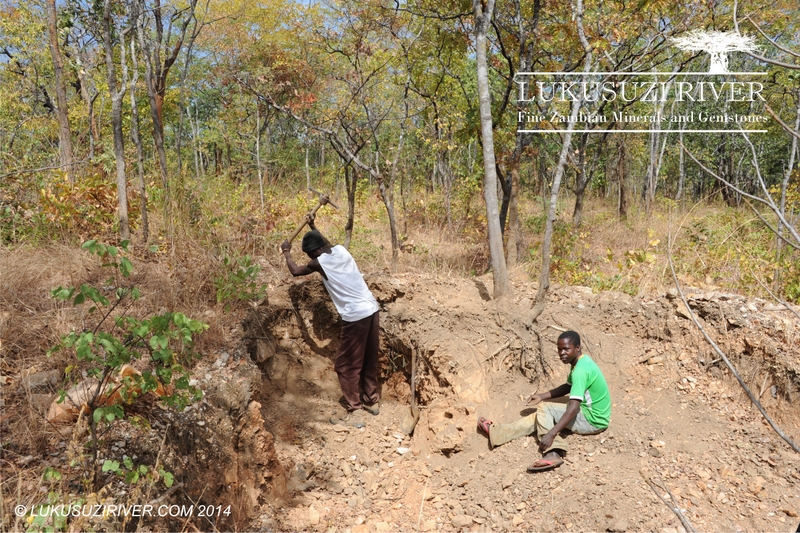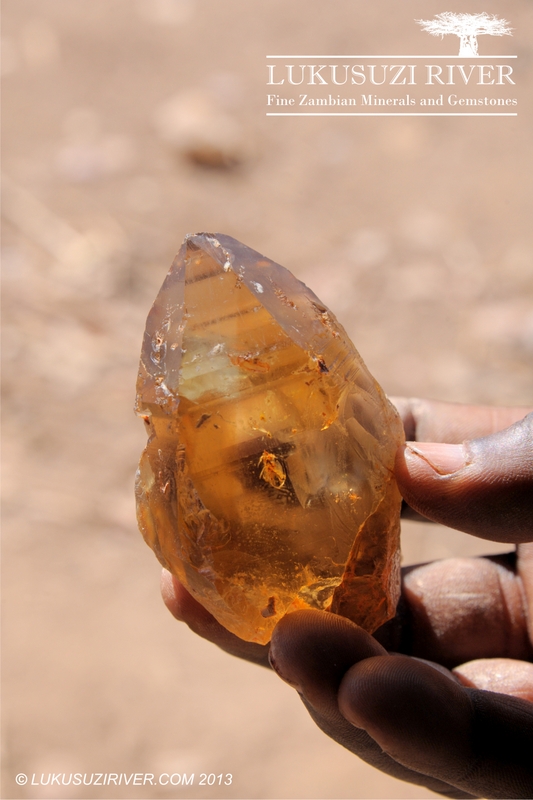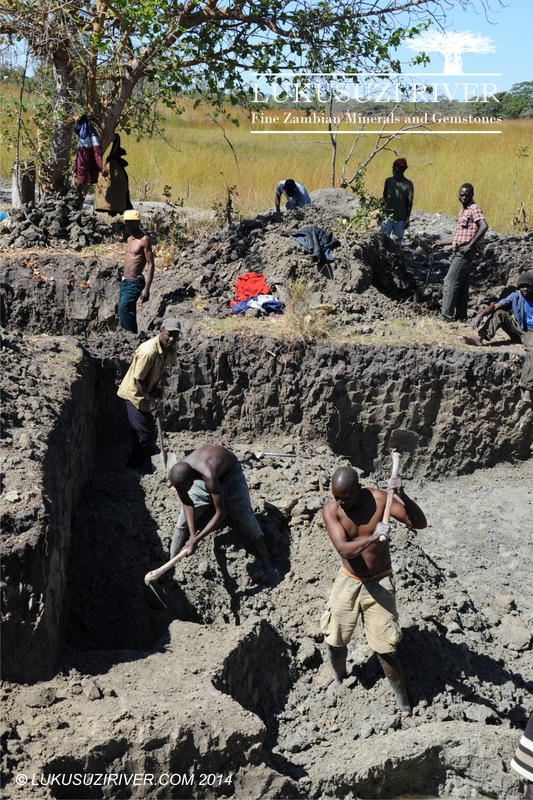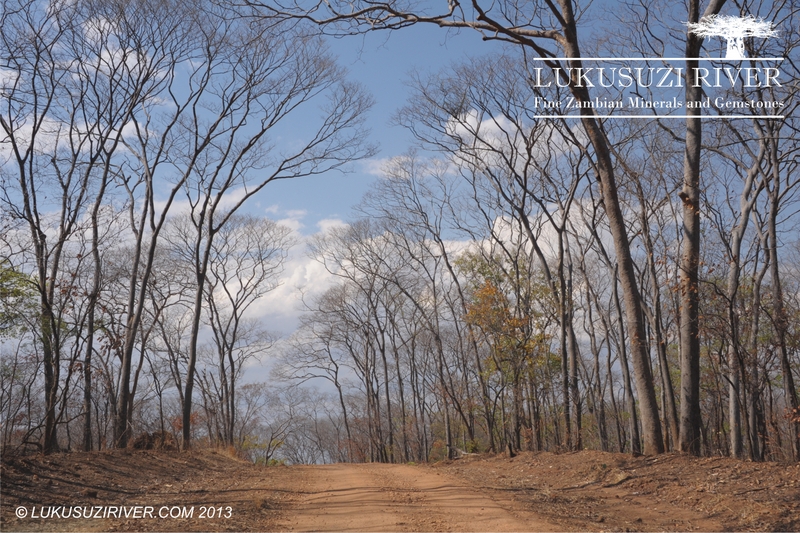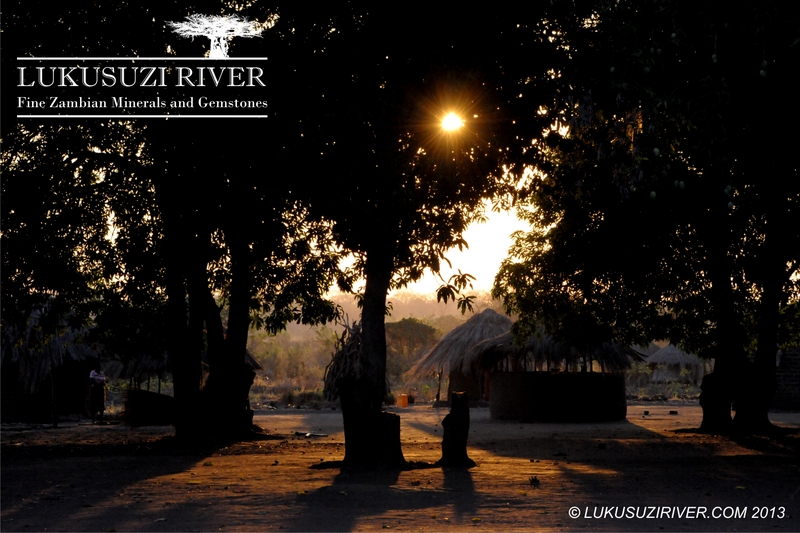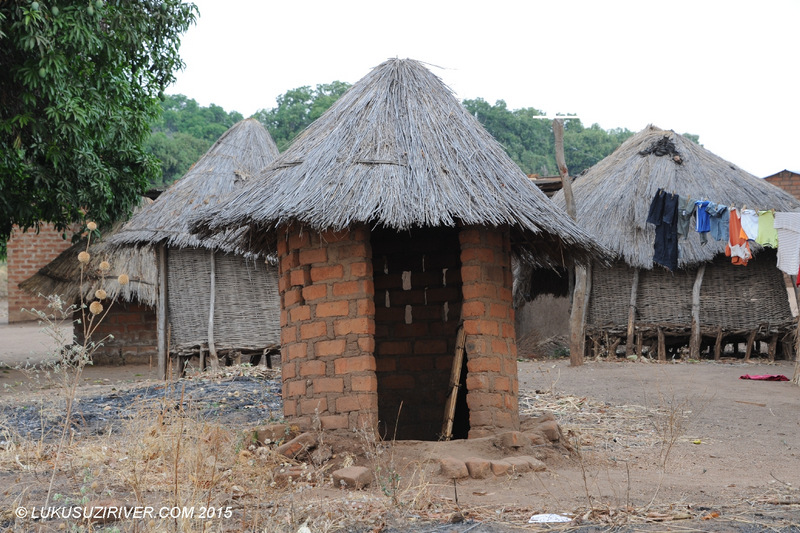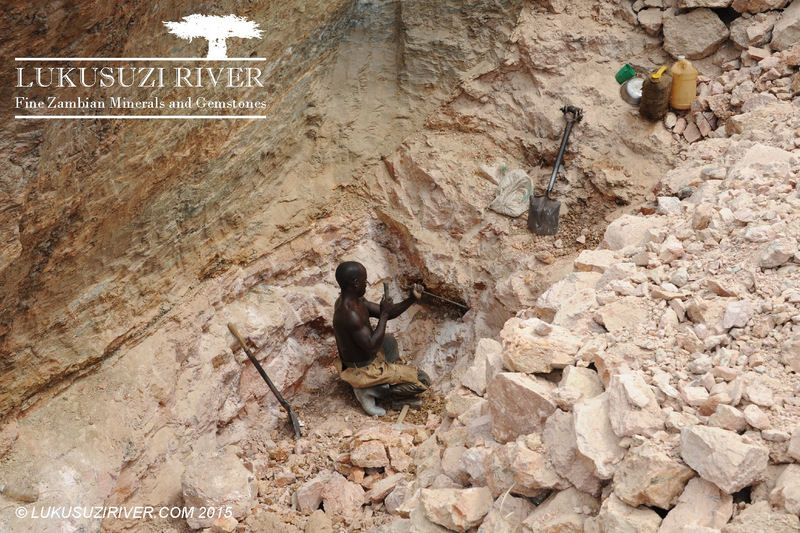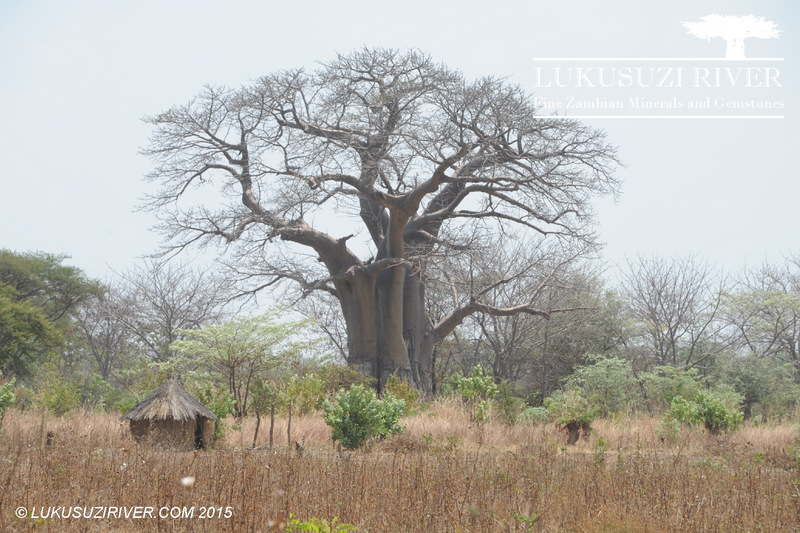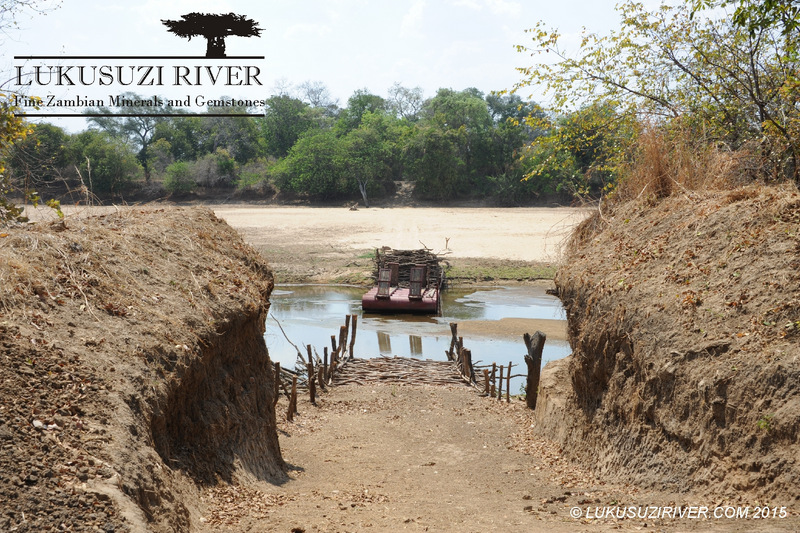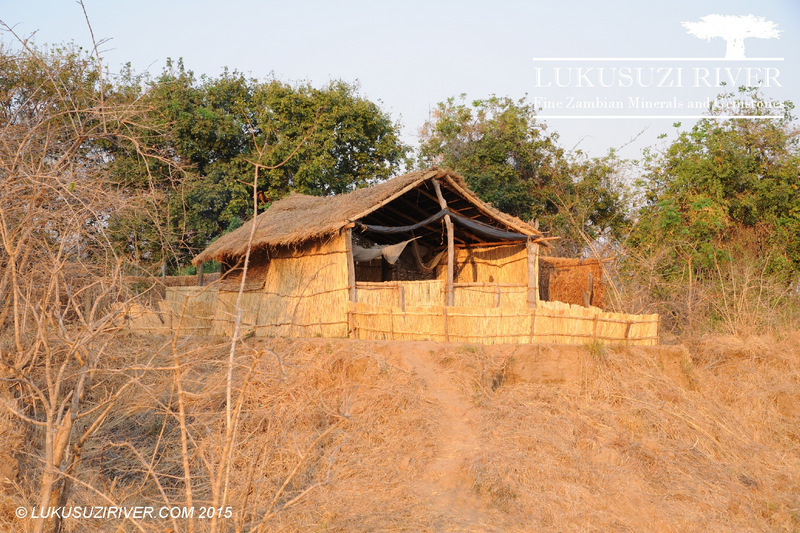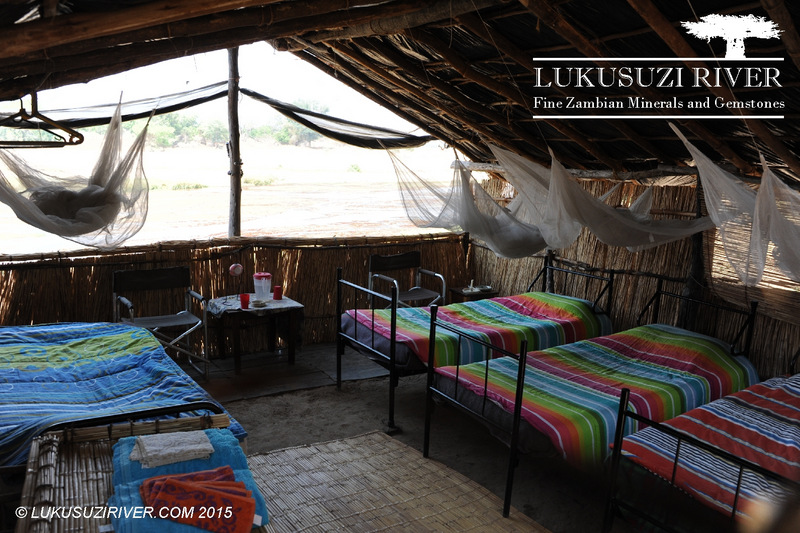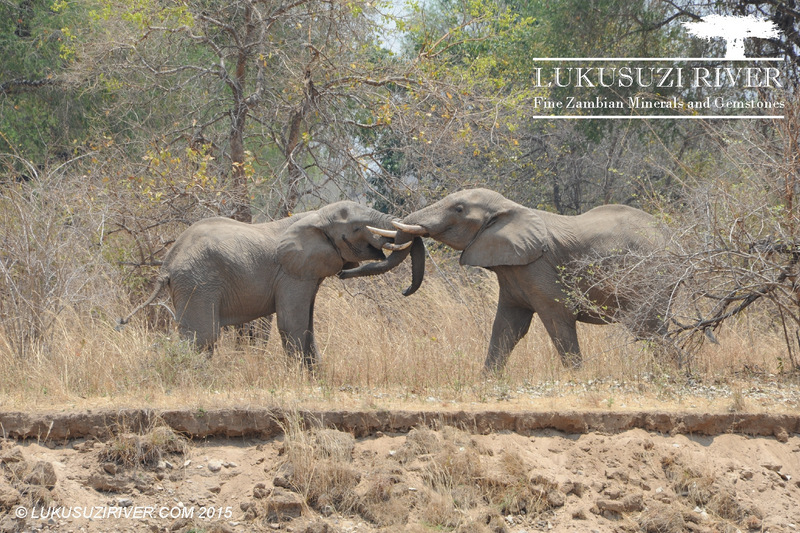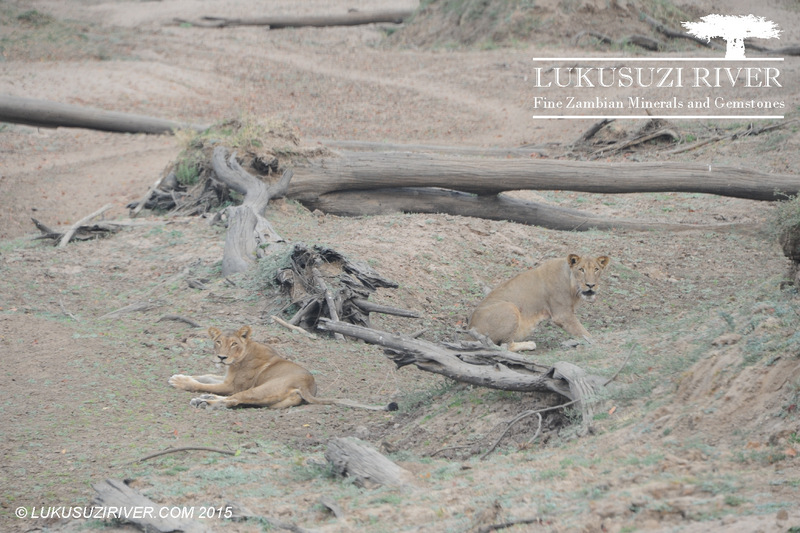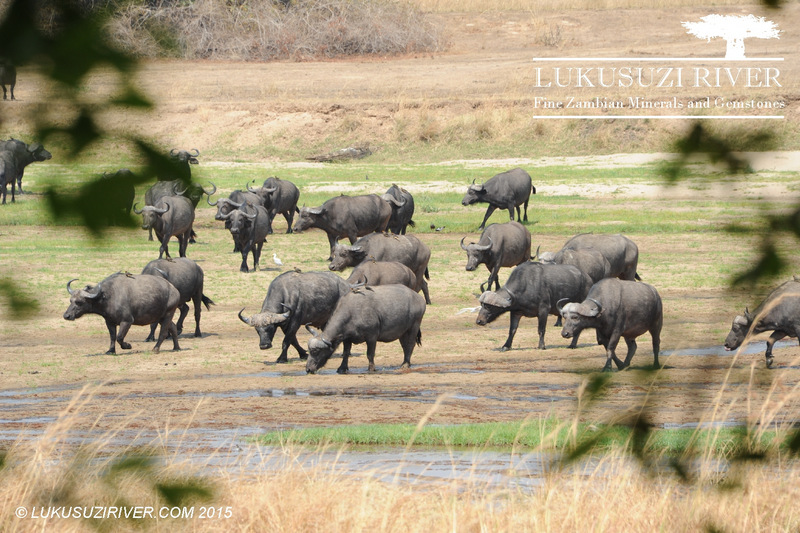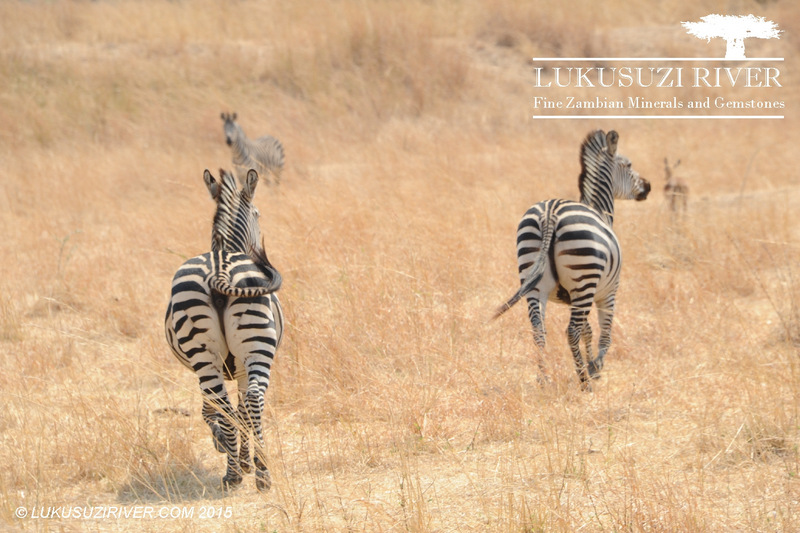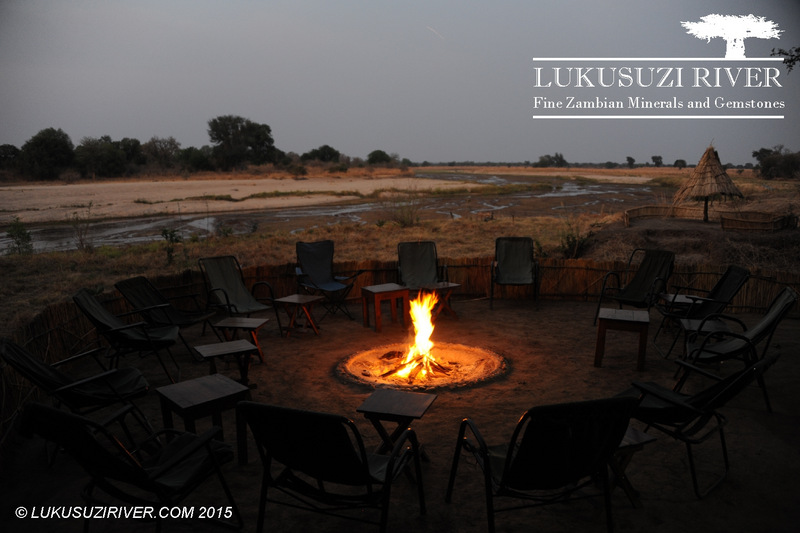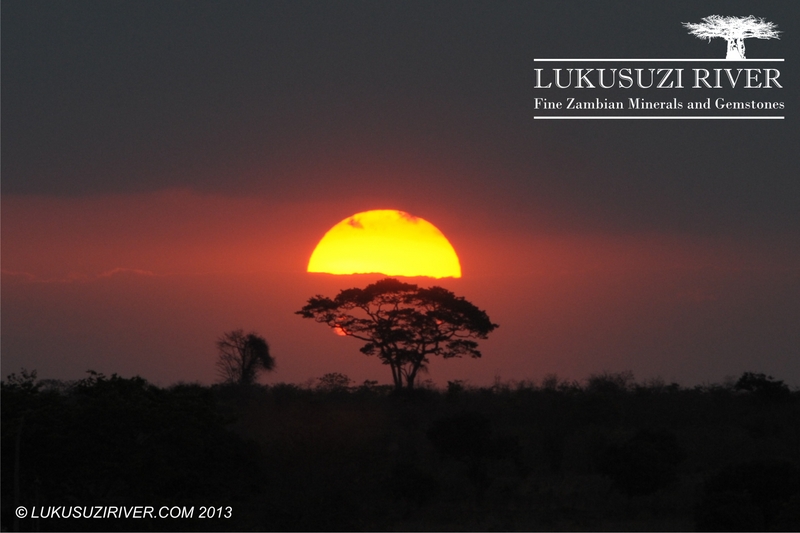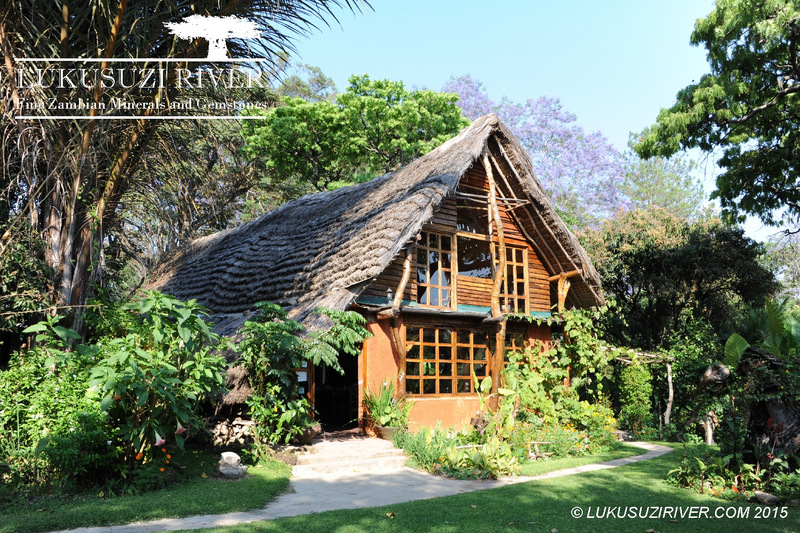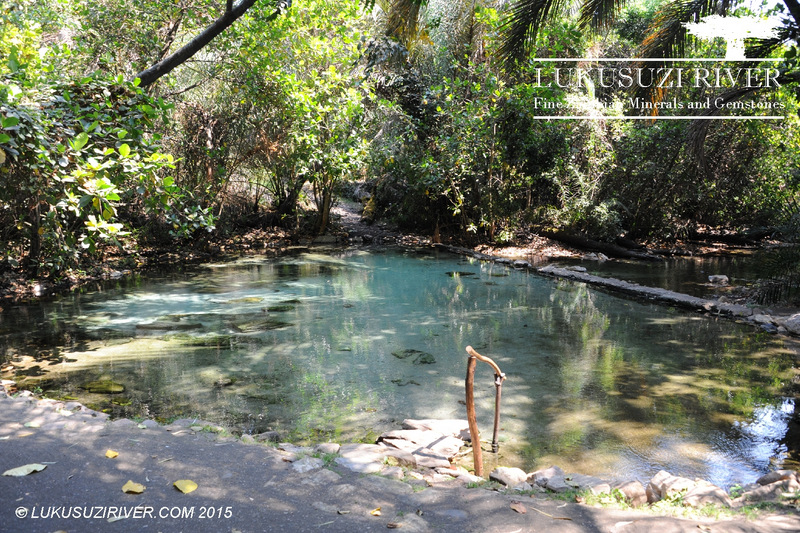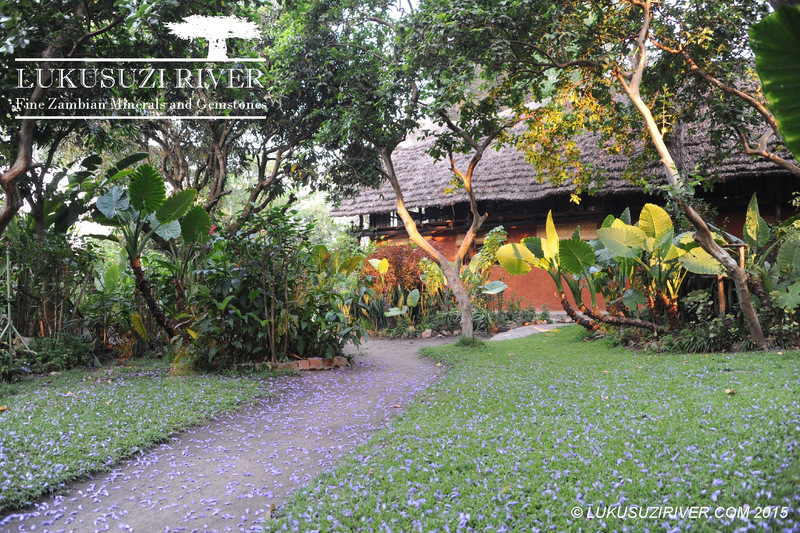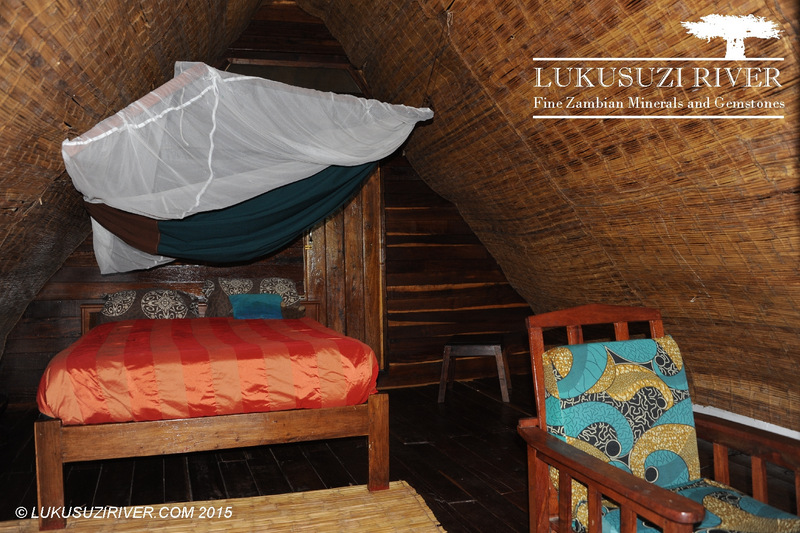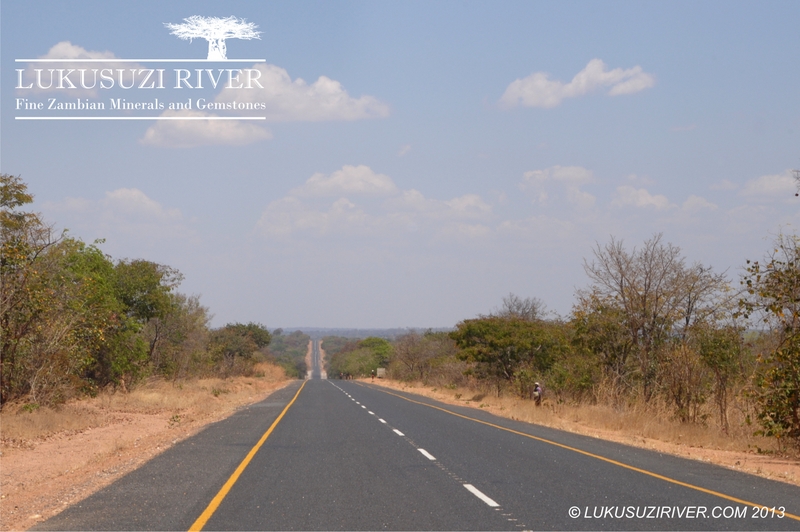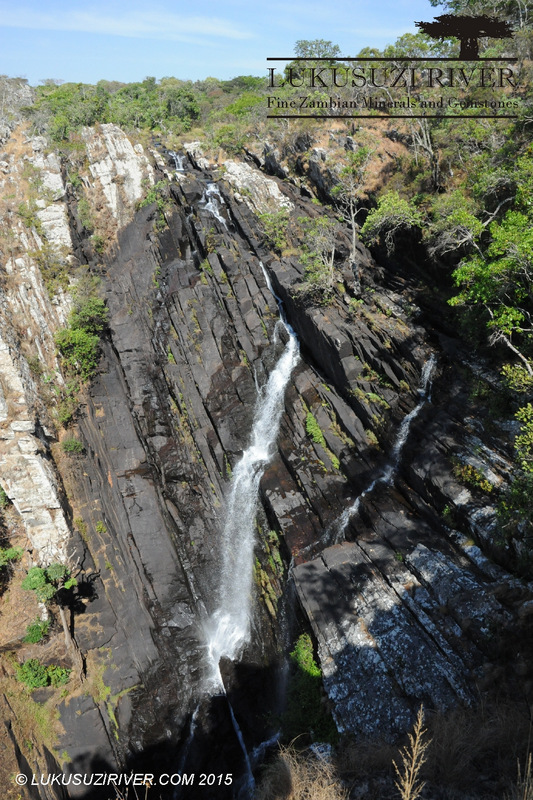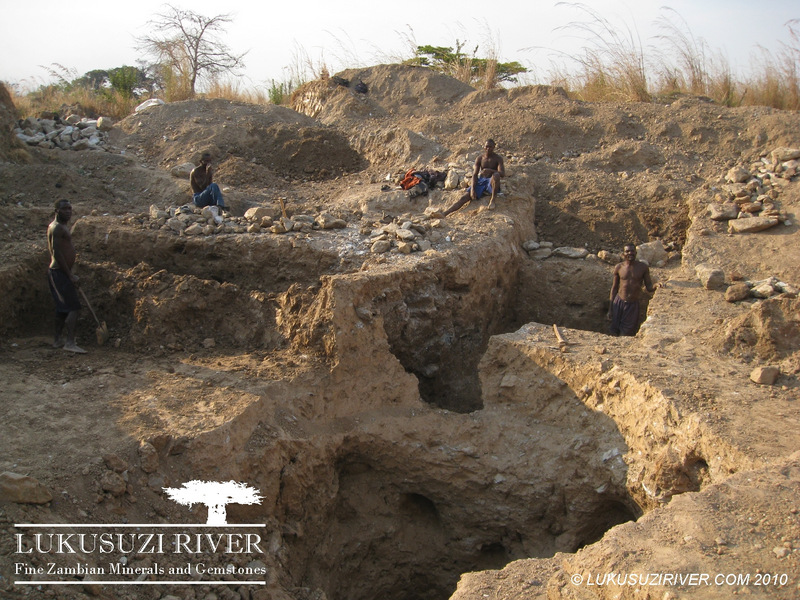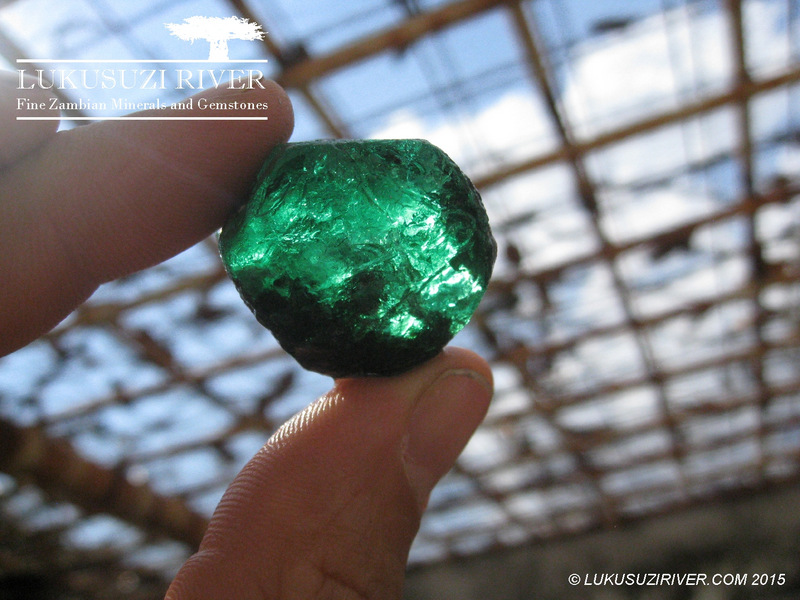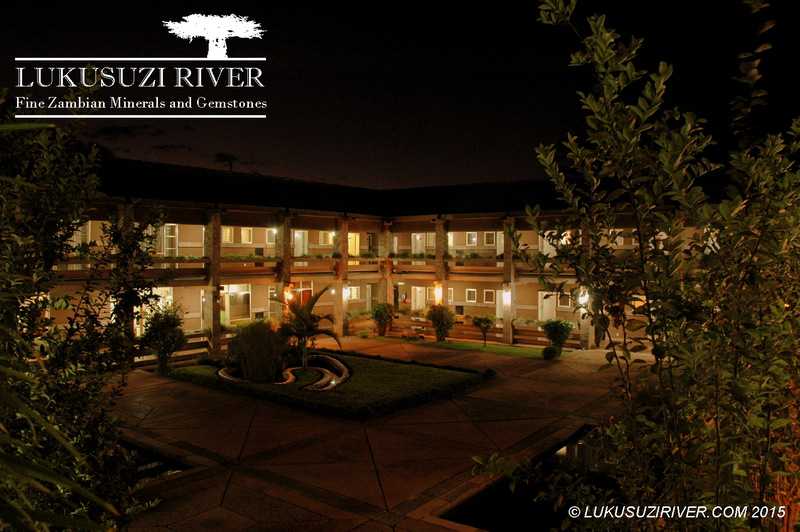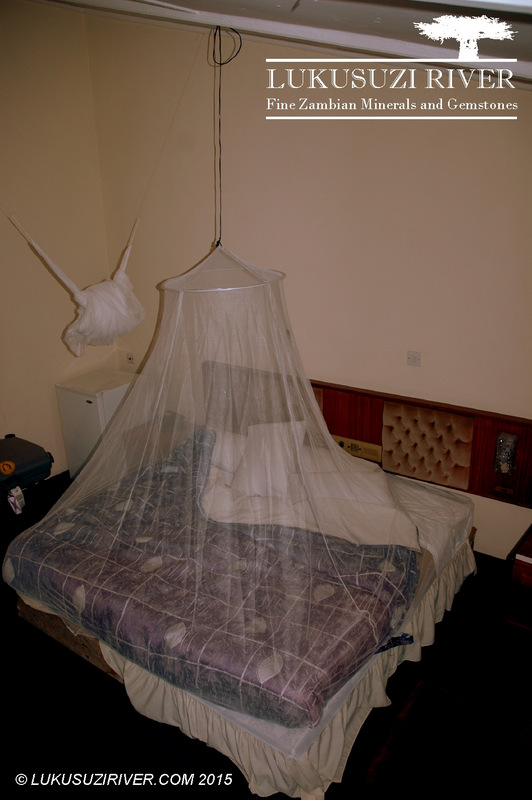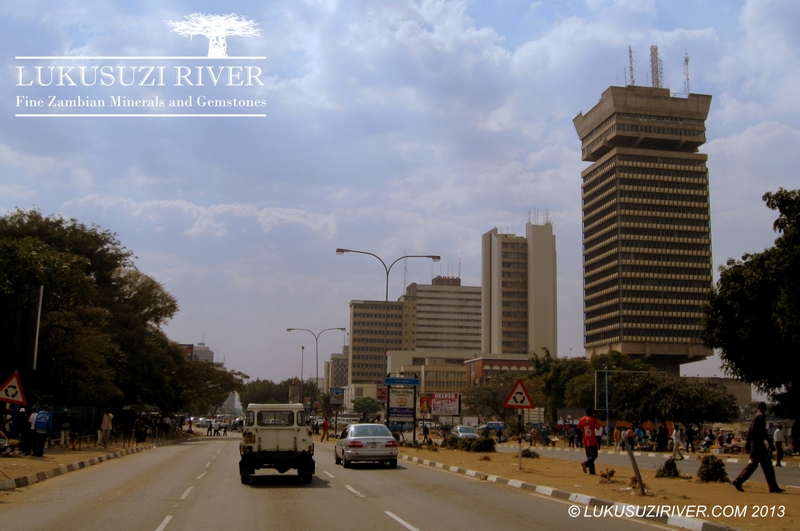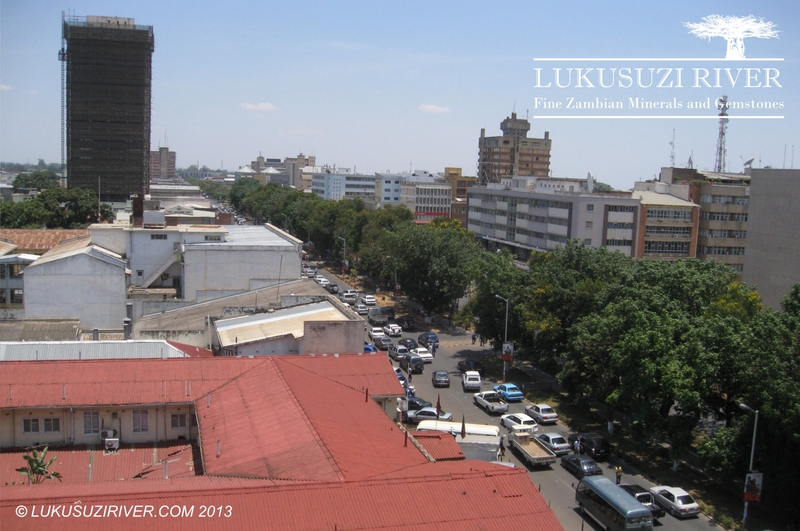Would you like to see the gem mines of Zambia?
Visit the gemstone mines of Zambia
Dig for your own gemstones and minerals
Experience the unique ambience of Africa
Be overwhelmed by the untouched flora and fauna of Zambia
Zambia claims to be ‘The Real Africa‘ and that's not inappropriate at all: Zambia has got everything one expects from Africa. The many national parks provide the classic Safari experience on foot or by car. You can't miss the animals - tourists, however, are rare. Here we provide the possibility to see and experience both: African wildlife at its best and the life around small-scale mining for aquamarine and tourmaline in the East of the country and the emerald mines of the Copperbelt. The tours are designed for small groups of up to 7 persons.
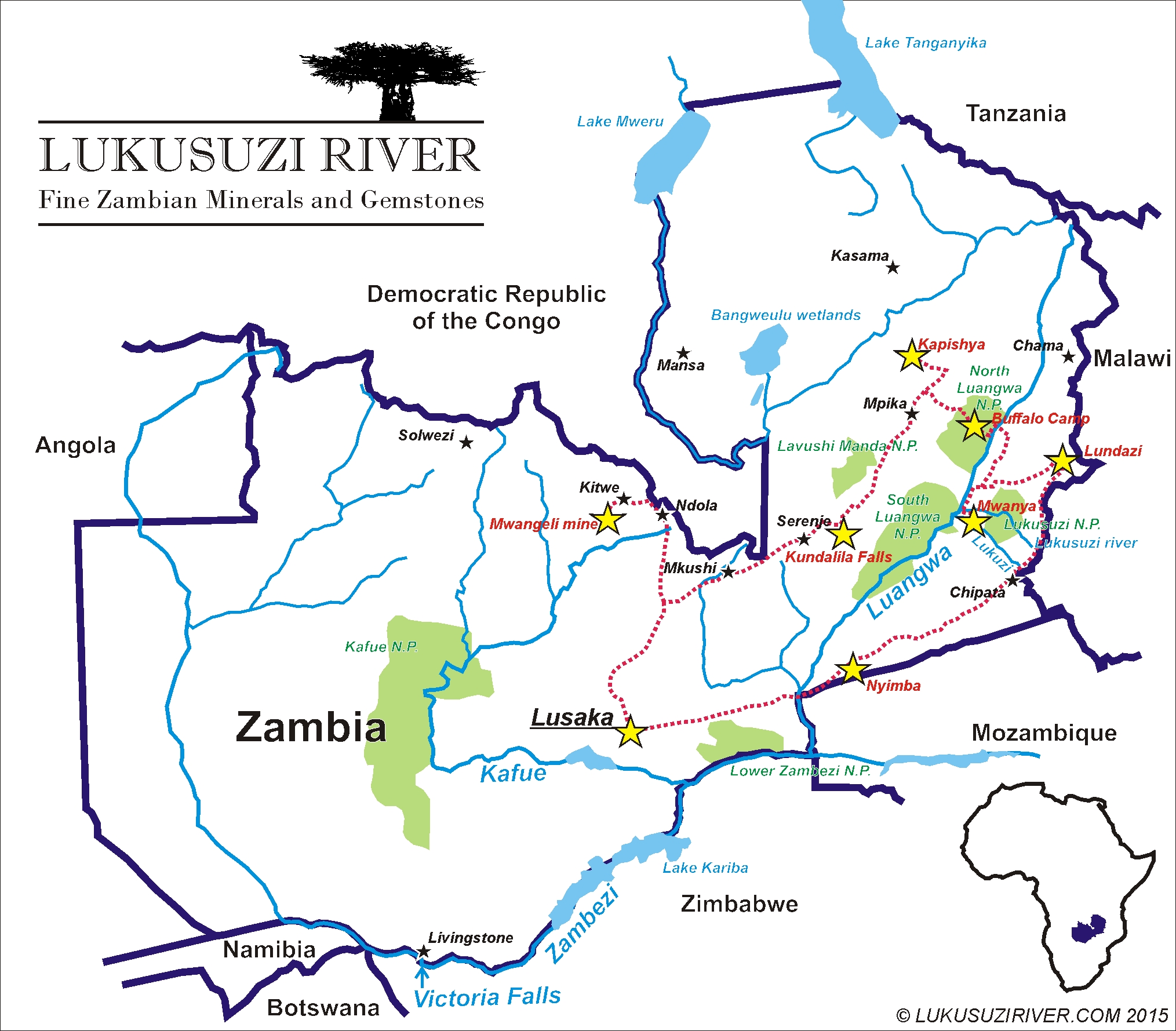
Possible programme for 15 days (click the days for details or scroll down):
Day 3: Driving to Nyimba (~400km), visiting the Hofmeyr Tourmaline mine
Day 4: Driving to Lundazi (~400km), visiting an aquamarine or tourmaline mine around Lundazi
Day 6: Driving over to the Luangwa valley (~170km); Staying the night at Mwanya village
Day 7: Visiting the Lukuzi and Chilume mines (aquamarine, tourmaline, morganite, etc.)
Day 8: Driving into the North-Luangwa National Park (~220km)
Day 9: Safari in the Nord-Luangwa National Park
Day 10: Driving to Kapishya Hot Springs Lodge (~160 km)
Day 11: Driving to Mkushi, stopover at Kundalila Falls (~470km)
Day 12: Driving to the Copperbelt, visiting the Mwangeli emerald mine (~200km)
Day 13: Driving back to Lusaka (~320km)
The actual programme may differ from the above depending on current mining activity
Maximum number of participants: 5-8 persons.
All transfers within Zambia are done with local 4x4 cars.
Travel dates:
29.September - 12.October 2024
If you are interested, please let us know by 31. March 2024: This email address is being protected from spambots. You need JavaScript enabled to view it.
Best time for travelling in Zambia is during the dry season between June and October. In the rainy season some roads, e.g. in the Luangwa valley are impassable.
Accommodation in hotels, safari lodges and in some casess in an traditional Zambia village.
Double rooms, the standard of accommodation varies between nice and comfortable (safari lodges) to simple but clean (some hotels) to very low (private setting in a village).
Rates:
4500 USD per Person
Single person supplement: 700 USD; Single rooms may not be available everywhere.
The following services are included in the package price:
- Organisation and guidance by a geologist and by a local gemstone expert, dealer and mine owner, with personal mining experience.
- Transportation with local cars in good condition (4x4)
- All accommodation in Zambia
- Meals on the road and in hotels, pure drinking water in bottles
- Visits to selected gemstone mines
- National park entry fees and activities in the North-Luangwa national park (e.g. game drives or walks)
- Export fees for gemstones and minerals (Export papers will be organised by us)
The package price does not include:
- Flights from and to Lusaka (economy class with from Zurich: from ~1400 USD; may vary)
- Visa (will be issued at the airport upon arrival; up to 50 USD p.p.)
- Alcoholic beverages and soft drinks
- Souvenirs, gemstones and minerals purchased
- Tips
For more information and bookings or for special arrangements: This email address is being protected from spambots. You need JavaScript enabled to view it.
Important information:
- Zambia is a safe country to travel. There is only a minor risk from criminality. Especially in the country side you will be welcomed by friendly people with great hospitality.
- Zambia is a high-risk area for Malaria! Even in the dry season there is a certain risk to get infected through mosquito bites, although it is much less then in the rainy season. Malaria prophylaxis and a personal bed net, insect repellent, long-sleeved clothing are highly recommended. Get advice from you tropical doctor on the necessary vaccinations. We do not recommend this trip for children under age 5.
- European digestive systems may be prone to failure in African conditions. A Typhoid-vaccination (oral) is highly recommended. Generally, much care should be taken with food and drinks (drink only mineral water from sealed bottles, food: cook it, peal it or leave it).
- In September and October it can become very hot in the Luangwa valley. A certain physical fitness is necessary for a visit to the mines near Mwanya.
- Dense road traffic with heavy trucks on the main roads especially to the Copperbelt bears a certain risk. Most other roads are mostly well maintained and with only minor traffic. Our drivers are very experienced with the local conditions.
- For immigration in Zambia a passport is needed, which is valid for at least 6 months past the date of leaving.
- The actual travel route and the specific hotels may change according to current mining activity and the booking status of hotels and lodges.
The organiser is not liable for any damage or loss of personal property or adverse effects on the health of the participants from accident, illness, theft, assault, financial loss or other negative experiences during the trip. The participants are joining a private holiday trip on their own responsibility. The organiser reserves the right to abort the trip at any time in case of an incident.
Programme details:
Individually or as a group from Zurich, Switzerland, e.g. with Emirates via Dubai
Flights usually leave on Saturday evening and arrive in Lusaka on Sunday afternoon.
Staying the night at Pioneer Lodge just outside Lusaka. (Single rooms may be available)
Day 3: Driving to Nyimba, visiting the Hofmeyr tourmaline mine (~400km, tarmac, 6h net driving)
The Hofmeyr mine is being worked for decades and yielded some very fine tourmaline in the past. Today, due to the lack of investment, only the surrounding alluvial is dug over. None the less beautiful and unusual stones keep being found.
Staying the night at Thula lodge, Nyimba.
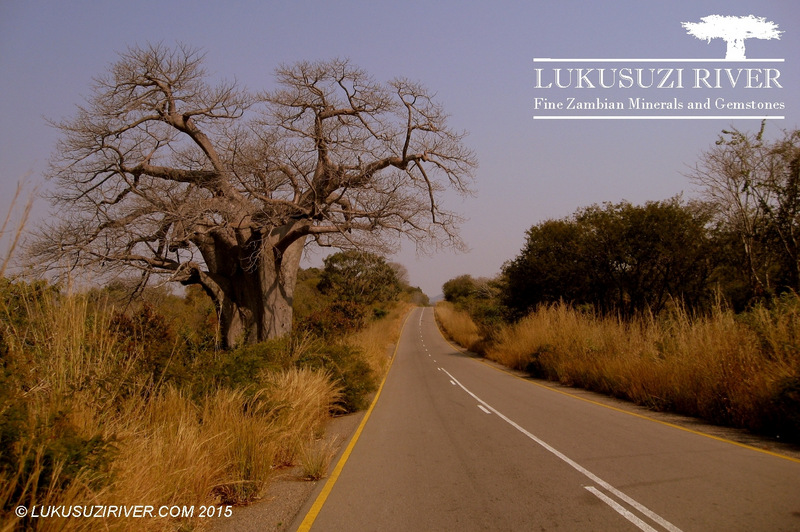
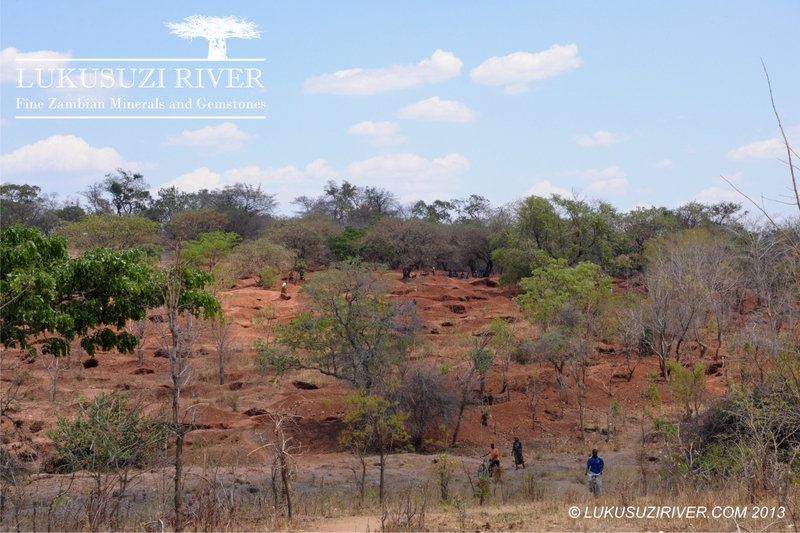
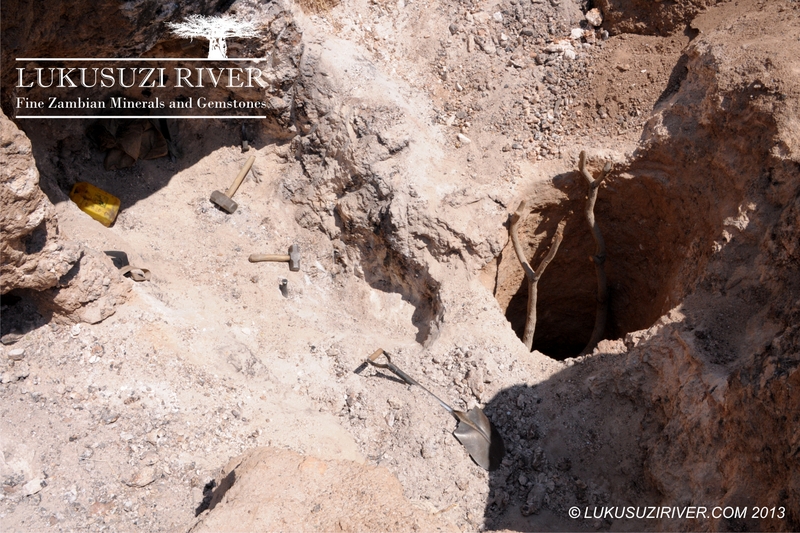
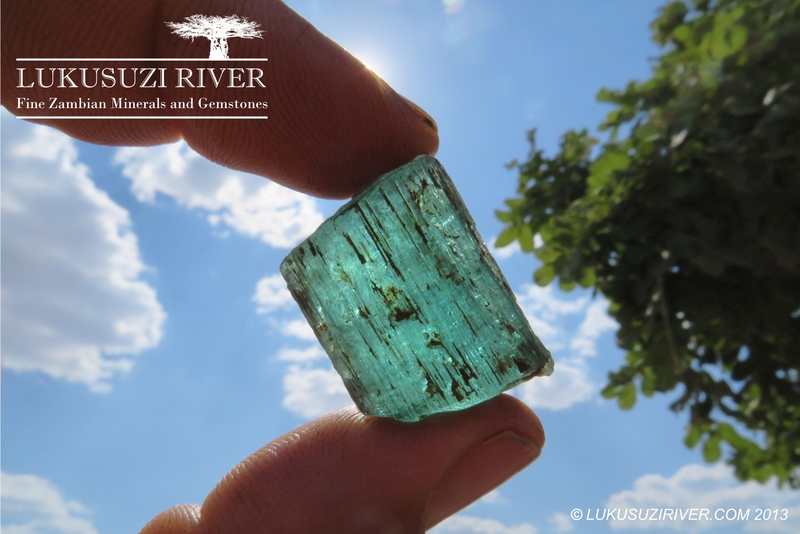
Day 4: Driving to Lundazi; visiting aquamarine and tourmaline mines around Lundazi (~400km, tarmac, 6h net driving)
Visit the currently producing gemstone mines in the Lundazi area. Join the miners chiselling the pegmatites or shovelling the waste rock out of the pit or just watch and explore. If you find a nice stone, it's yours.
Staying the night at Lundazi Castle hotel.

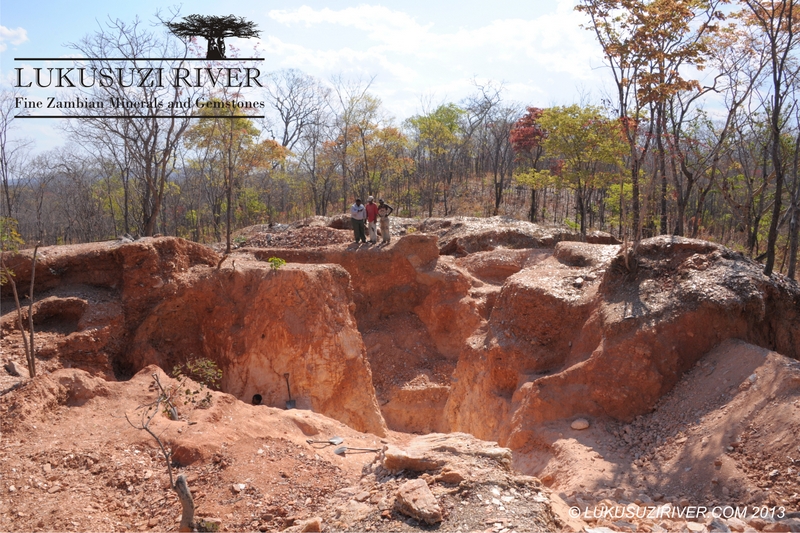
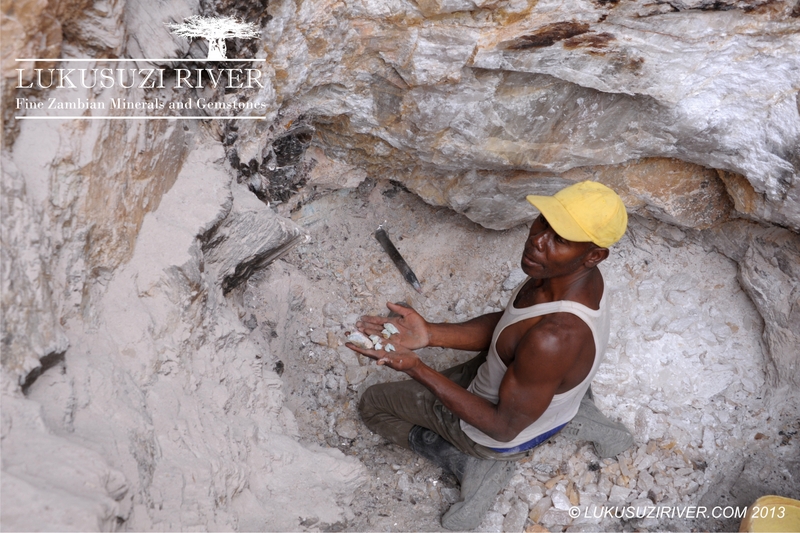
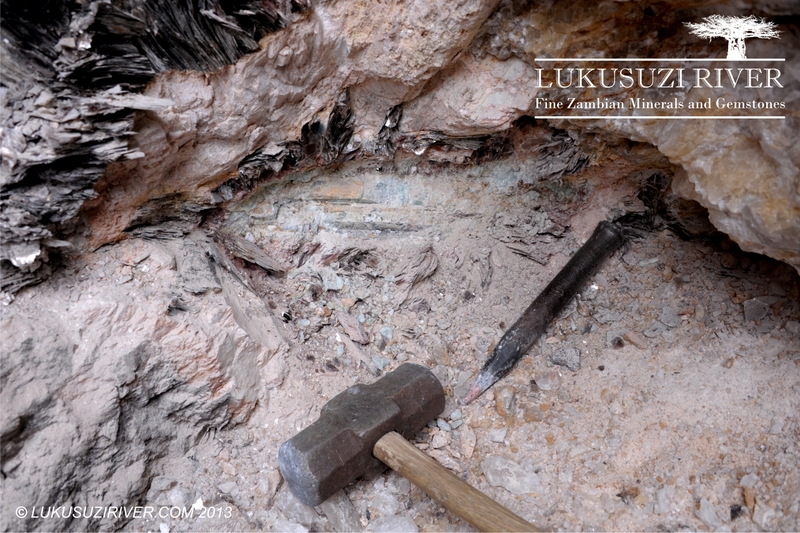
Lundazi is a small town in the very East of Zambia and counts about 20000 people. The area around Lundazi is famous for its countless gemstone pegmatites, which are being mined mostly by hand using very basic tools. There will be the possibility to buy stones directly from the miners.
Staying the night at Lundazi Castle hotel, an old colonial house (single rooms available).
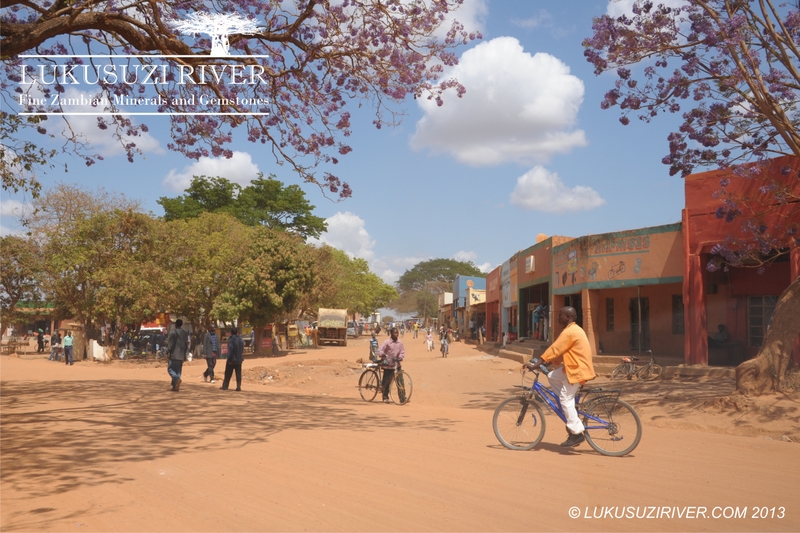
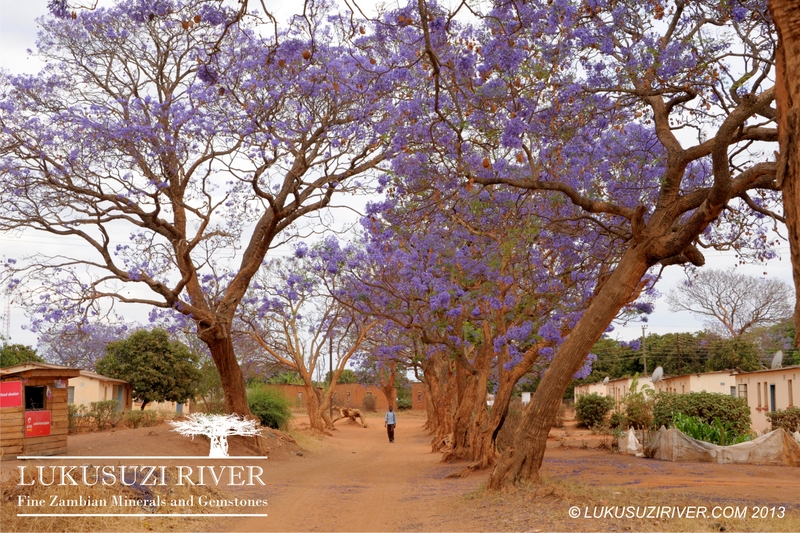
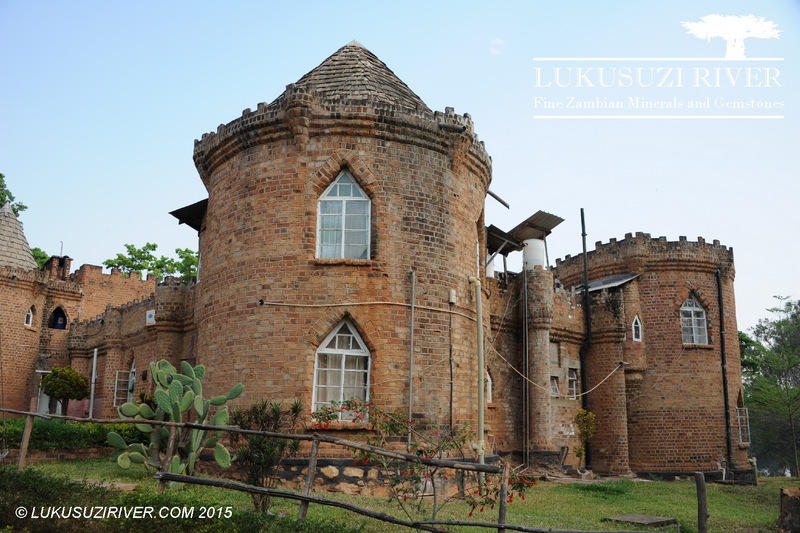

Day 5: Visiting an amethyst, citrine oder quartz mine
Visiting a mine within the Lundazi area for digging up your own minerals, such as amethyst, citrine or quartz or even gems once more. The place will be prepared by the miners by removing barren overburden to make it easier for you to reach a productive zone. Whatever you find, you can keep.
Staying the night at Lundazi Castle hotel.
Day 6: Driving to the Luangwa valley (~170km; gravel road; net driving time: ~5h)
To the west of Lundazi the land becomes much less populated and towards the Luangwa valley pristine Miombo woodland stretches over the more and more hilly landscape. The Luangwa valley represents the Southern-most end of the East African Rift Valley. Coming from Lundazi there is a gentle descent of about 600m until the river is reached. The three national parks of the Luangwa valley, South Luangwa, North Luangwa and Luambe, host all the typical African animals, like lions, elephants, buffalos, zebras, countless antelopes and many more.
Between the South Luangwa, the Luambe in the valley and the Lukusuzi national park to the East lies the village of Mwanya and in its vicinity several of the currently best aquamarine mines in Zambia: the Lukuzi River Mines and the Mines of Chilume, which are being visited the next day.
Staying the night in Mwanya village in traditional thatched mud brick huts. Here we will receive true African hospitality - a unique experience.
Please note that this is not a hotel or any sort of tourist facility. There are not guest beds, showers or water closets! Bring your own mat, sleeping bag and mosquito net. There are very basic bath rooms with a bucket of warm water and toilets (a hole in the ground with a little hut around). Single accommodation may not be possible.
Day 7: Visiting the Lukuzi and Chilume mines (aquamarine, tourmaline, morganite)
The visit of the mines at Chilume and the Lukuzi River involves short walks of up to half an hour through the bush. The terrain is mostly flat with gentle hills. Towards the end of the dry season (September, October) the area around Mwanya becomes very hot (40°C and more, but very dry); a certain physical fitness is necessary to cope with these conditions.
At the mines you will be able to try to find your own gemstones. You can keep what you find, but mining the pegmatite is hard work and the chance of hitting a pocket are limited. If you prefer to watch, you will most probably be able to buy one or the other stone from the miners.
Staying the night in Mwanya village.
Day 8: Driving to Buffalo Camp in the North Luangwa national park (~220km, gravel road; net driving time: ~7.5h)
We will leave Mwanya to the North driving through Luambe national park and further through untouched mopane woodland until we reach the Luangwa pontoon, where the river can be crossed. Buffalo Camp is situated at the Mwaleshi river, a tributary of the Luangwa river. The camp consists of half-open chalets directly at the banks of the river - perfect for watching the animals while enjoying a drink at the bar. The North Luangwa national park is the most remote and hence the least frequented national park in the Luangwa valley. Rather few visitors make it here compared to South Luangwa.
Staying the night at Buffalo Camp; the camp has only 6 chalets; single rooms may not be available.
Day 9: Safari at North Luangwa national park
Walking safaris and game drives give you the opportunity to see the spectacular fauna of North Luangwa with no other tourist vehicle in front. The guides and scouts get you to watch the animals from as close as possible and keep you safe.
Staying the night at Buffalo Camp.
Day 10: Driving to Kapishya Hot Springs Lodge (~160 km, mostly gravel roads; net driving time: ~3.5h)
To the West of the Luangwa the Muchinga escarpment rises about 1000m high. On top, hidden within a lovely hilly landscape, is a little paradise: the Kapishya Hot Springs with a beautiful lodge next to it. Surrounded by a patch of tropical forest, 40°C hot water streams out of the ground into a little pool with fine, white sand. The perfect place to relax and wash off all the dust of the Luangwa valley. The Kapishya Hot Springs Lodge just nearby has a number of comfortable chalets scattered in a beautiful tropical garden. The restaurant of the lodge serves mostly home grown meat and vegetables, they even have their own coffee.
The surroundings invite for small hikes to view points up the hills or a visit to Shiwa Ngandu, an old English farm house. The woodland around Kapishya hosts a wealth of interesting plants, such as rare orchids.
Staying the night at Kapishya lodge; the lodge has only 6 chalets; single rooms may not be available.
Day 11: Driving to Mkushi, stopover at Kundalila Falls (~530km, tarmac, net driving time: ~7h)
Since the distance between Kapishya and Mkushi is more than 500km, most of the day will be spent driving. There is the possibility of a stopover at Kundalila falls to stretch legs and to check out this wonderful place.
Staying the night at Forest Inn near Mkushi: simple but clean; single rooms are available.
Day 12: Driving to Ndola near the main emerald mining area of Zambia in the Copperbelt and visiting the Mwangeli emerald mine (~220km, tarmac, net driving time: ~3h)
Zambia is the second largest emerald producer worldwide. Zambian emeralds often come in top quality with a nice, deep colour and great clarity. Most of the Zambian emerald production comes from the large, mechanised Kagem mine, which is operated by a British gemstone mining company. The area hosts many more emerald mines of different sizes. The Mwangeli mine is a smaller operation and is situated right next to Kagem.
Staying the night at Mukuba Hotel, Ndola (simple, but clean; single rooms are available)
Day 13: Driving back to Lusaka (~320km, tarmac, net driving time: ~4.5h)
The road South from the Copperbelt usually has very dense traffic with plenty of heavy trucks carrying copper or supplies for the mines. This makes driving this route rather time consuming. In case of arriving early enough there is time for a little sightseeing tour through Lusaka.
Staying the night at Pioneer Lodge just outside Lusaka. (Single rooms may be available)
Day 14-15: Lusaka and flight back home
The international flights (Emirates) leave late in the evening, so most of the day can be spent in Lusaka buying souvenirs (e.g. African arts and crafts) and getting the export formalities for the collected and purchased gems and minerals finished.



